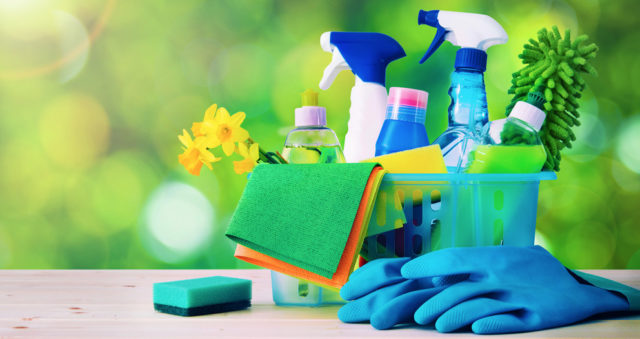
Spring cleaning is a great way to give your home a fresh start and give yourself a sense of accomplishment. But it can be hazardous to your health if you don’t take the proper precautions, especially if you have asthma or other chronic lung conditions.
That’s because some cleaning supplies — air fresheners, rug cleaners, chlorine bleach, oven cleaners and floor polish — include dangerous chemicals such as volatile organic compounds. These chemicals become vapors that may irritate the nose, throat, eyes and lungs.
“The nose provides a helpful warning signal,” said Dr. Timothy Craig, an allergist and immunologist at Penn State Health. “If someone’s nose becomes irritated while cleaning, it’s safe to assume his or her lungs will be irritated, too.”
A recent study shows the potential dangers. Scientists at Norway’s University of Bergen tracked 6,000 people who used cleaning products over two decades. They found that women who used sprays or other cleaning products at least once per week experienced a decline in lung function.
“For most people, using chemical cleaners occasionally would not create clinically significant reductions in lung function,” Craig said. “But repeated exposure to harmful chemicals over a lifetime could lead to significant disability later in life, especially for people with asthma, chronic obstructive pulmonary disease or Alpha 1 antitrypsin deficiency, a genetic disorder that may cause lung or liver disease.”
The best bet is to practice caution. “We all clean with bleach and other chemicals from time to time,” said Dr. Ann Bogdan, a family medicine physician at Penn State Health Medical Group ― Mechanicsburg. “But I encourage my patients to be careful when doing so.”
Here are six safety tips that should be on everyone’s spring cleaning checklist:
- Don’t combine chemical cleaners. “In particular, never mix ammonia and bleach,” Bogdan said.
- Create proper ventilation. Open a window or door — or run a fan — while cleaning.
- Wear rubber gloves. “Without them, you run the risk of developing redness or rashes on your hands,” Craig said.
- Seek old-fashioned cleaners. Use warm water, baking soda, a washcloth and some old-fashioned elbow grease. “Diluted vinegar works well to clean windows, and baking soda gives you scrubbing power,” Bogdan said.
- Read labels. Look for volatile organic compounds and other potential irritants, even in products labeled as “green” or “healthy.”
- Look for the “Safer Choice” logo. It’s found on 2,000 products — including cleaners — that the Environmental Protection Agency deems as “safer for human health and the environment.
People who experience any coughing, wheezing, throat soreness or eye watering while using chemical cleaners should step into another room or walk outside. If the symptoms persist even after leaving the room, call a doctor.
Original source: https://news.psu.edu/story/572435/2019/05/01/medical-minute-six-tips-safe-spring-cleaning?utm_source=newswire&utm_medium=email&utm_term=572487_HTML&utm_content=05-01-2019-23-46&utm_campaign=Penn%20State%20Today